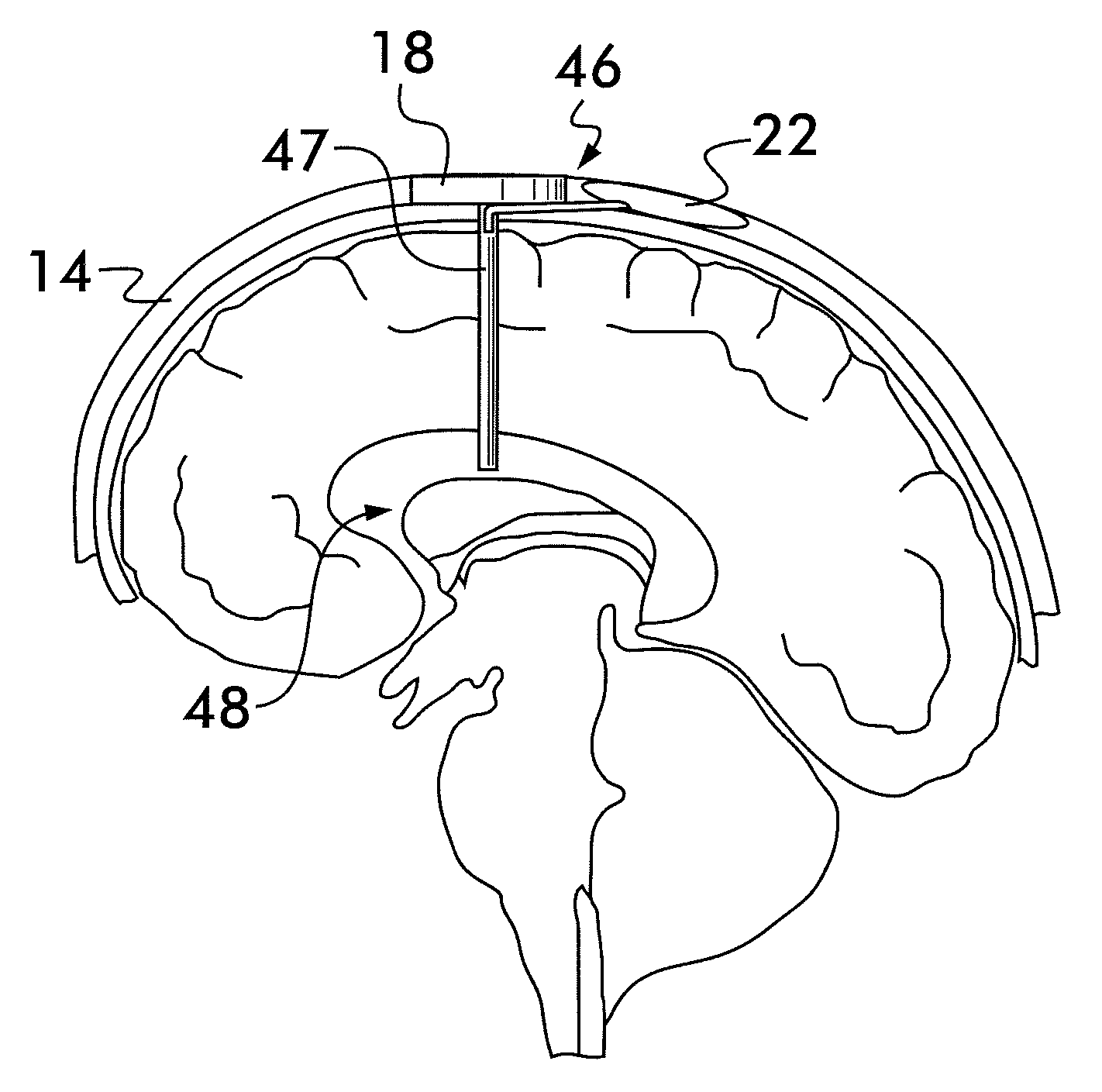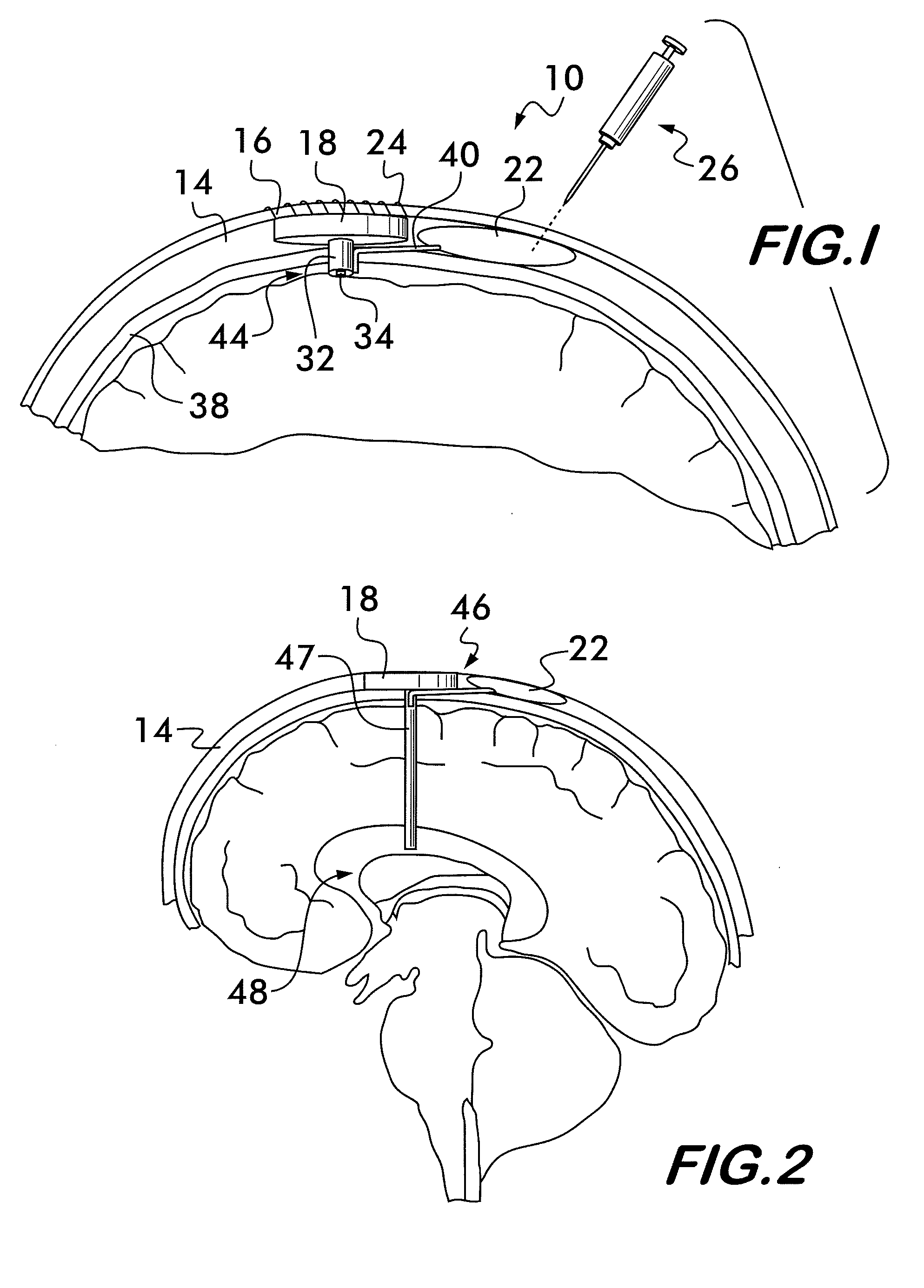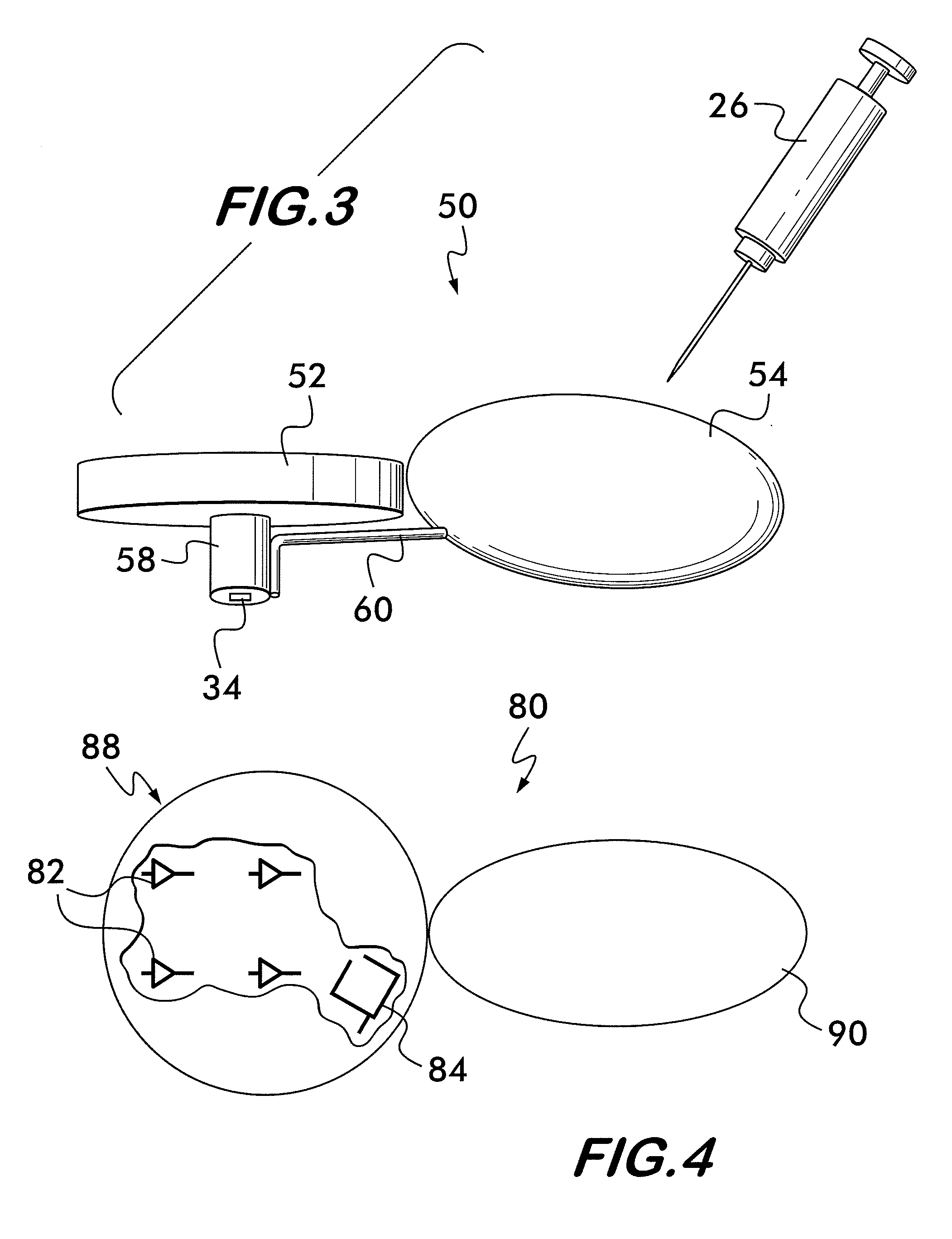Intracranial pressure sensor
a technology of intracranial pressure and sensor, which is applied in the field of physiological measurements, can solve the problems of limited useful life, head injury, and the typical use of neurosurgical intracranial monitors, and achieve the effects of convenient implanting of intracranial pressure monitoring systems, reducing the need for batteries, and reducing the need for energy transducers
- Summary
- Abstract
- Description
- Claims
- Application Information
AI Technical Summary
Benefits of technology
Problems solved by technology
Method used
Image
Examples
Embodiment Construction
[0046]Referring now to FIG. 1, there is shown an embodiment of the intracranial pressure monitor system 10 of the invention. The intracranial pressure monitor system 10 includes a housing portion 18, which can contain a portion of the circuitry required for monitoring the pressure of the CSF within a skull 14. The circuitry within the housing portion 18 of the intracranial pressure system 10 can be substantially similar to the circuitry disclosed in U.S. Pat. Pub. No. 2009 / 0216149, entitled “Self-Contained, Implantable, Intracranial Pressure Sensing Device and Methods For Its Use In Monitoring Intracranial Pressure,” published Aug. 27, 2009, which is incorporated by reference in its entirety. In a preferred embodiment of the invention, the housing portion 18 can be located between the scalp 16 and the skull 14, with the bottom surface of the housing portion 18 resting on the outer surface of the skull 14. In another embodiment, the bottom surface of the housing portion 18 can rest o...
PUM
 Login to View More
Login to View More Abstract
Description
Claims
Application Information
 Login to View More
Login to View More - R&D
- Intellectual Property
- Life Sciences
- Materials
- Tech Scout
- Unparalleled Data Quality
- Higher Quality Content
- 60% Fewer Hallucinations
Browse by: Latest US Patents, China's latest patents, Technical Efficacy Thesaurus, Application Domain, Technology Topic, Popular Technical Reports.
© 2025 PatSnap. All rights reserved.Legal|Privacy policy|Modern Slavery Act Transparency Statement|Sitemap|About US| Contact US: help@patsnap.com



